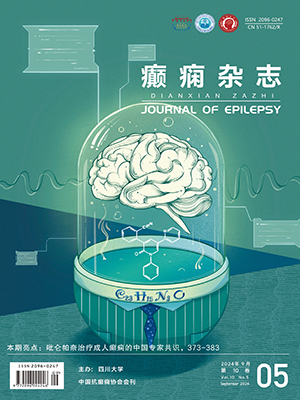| 1. |
梁嘉莉, 蔡妍, 李常兴. 1型神经纤维瘤病发病机制及治疗进展. 皮肤科学通报, 2024, 41(1): 70-78.
|
| 2. |
Kallionpää RA, Uusitalo E, Leppävirta Jussi, et al. Prevalence of neurofibromatosis type 1 in the Finnish population. Genetics in Medicine, 2017, 20(9): 1082-1086.
|
| 3. |
Kandt RS. Tuberous sclerosis complex and neurofibromatosis type 1: the two most common neurocutaneous diseases. Neurologic Clinics, 2002, 20(4): 941-964.
|
| 4. |
Messiaen LM , Callens T, Mortier G, et al. Exhaustive mutation analysis of the NF1 gene allows identification of 95% of mutations and reveals a high frequency of unusual splicing defects. Hum Mutat, 2000, 15(6): 541-555.
|
| 5. |
Eric L, Ludwine M, Pierre W, et al. Revised diagnostic criteria for neurofibromatosis type 1 and Legius syndrome: an international consensus recommendation. Genetics in Medicine, 2021, 23(8): 1506-1513.
|
| 6. |
François-Olivier D, Dalil H, Marine L, et al. Human splicing finder: an online bioinformatics tool to predict splicing signals. Nucleic acids research, 2009, 37(9): e67.
|
| 7. |
Laura T, Mark R, Matthew M, et al. Assessment of the potential pathogenicity of missense mutations identified in the GTPase-activating protein (GAP)-related domain of the neurofibromatosis type-1 (NF1) gene. Hum Mutat, 2012, 33(12): 1687-1696.
|
| 8. |
Yap YS, McPherson JR, Ong CK, et al. The NF1 gene revisited - from bench to bedside. Oncotarget, 2014, 5(15): 5873-5892.
|
| 9. |
Barba C, Jacques T, Kahane P, et al. Epilepsy surgery in neurofibromatosis Type 1. Epilepsy Research, 2013, 105(3): 384-395.
|
| 10. |
Ars E , Serra E, García J, et al. Mutations affecting mRNA splicing are the most common molecular defects in patients with neurofibromatosis type 1. Human Molecular Genetics, 2000, 9(2): 237-247.
|
| 11. |
Ingmar B, Maria T, Eleonora A, et al. The clinicopathologic spectrum of focal cortical dysplasias: a consensus classification proposed by an ad hoc Task Force of the ILAE Diagnostic Methods Commission. Epilepsia, 2011, 52(1): 158-174.
|
| 12. |
Runke M, Salanova V. Epilepsy due to a cortical malformation in a neurofibromatosis type 1 patient. Seizure, 2013, 22(6): 476-479.
|
| 13. |
Hsueh YP, Roberts AM, VoltaM, et al. Bipartite interaction between neurofibromatosis type I protein (neurofibromin) and syndecan transmembrane heparan sulfate proteoglycans. The Journal of Neuroscience, 2001, 21(11): 3764-3770.
|
| 14. |
Rodriguez FJ, Ligon AH, Horkayne-Szakaly I, et al. BRAF duplications and MAPK pathway activation are frequent in gliomas of the optic nerve proper. Journal of Neuropathology and Experimental Neurology, 2012, 71(9): 789-794.
|
| 15. |
Sosunov AA, Wu XP, McGovern RA, et al. The mTOR pathway is activated in glial cells in mesial temporal sclerosis. Epilepsia, 2012, 53(Suppl1): 78-86.
|
| 16. |
Violante IR, Miguel P, Inês B, et al. GABA deficiency in NF1: A multimodal [11C]-flumazenil and spectroscopy study. Neurology, 2016, 87(9): 897-904.
|
| 17. |
Ren M, Li K, Wang D, et al. Neurofibromin regulates seizure attacks in the rat pilocarpine-induced model of epilepsy. Molecular neurobiology, 2016, 53(9): 6069-6077.
|
| 18. |
Zhu Y, Romero MI, Ghosh P, et al. Ablation of NF1 function in neurons induces abnormal development of cerebral cortex and reactive gliosis in the brain. Genes & Development, 2001, 15(7): 859-876.
|
| 19. |
刘妍, 袁裕衡, 马明圣, 等. NF1基因突变致1型神经纤维瘤病 8 例临床分析. 临床儿科杂志, 2016, 34(11): 819-824.
|
| 20. |
Gales J, Prayson RA. Hippocampal sclerosis and associated focal cortical dysplasia-related epilepsy in neurofibromatosis type I. Journal of Clinical Neuroscience, 2016, 37: 15-19.
|
| 21. |
Wimmer K, Roca X, Beiglböck H, et al. Extensive in silico analysis of NF1 splicing defects uncovers determinants for splicing outcome upon 5′ splice‐site disruption. Human Mutation, 2007, 28(6): 599-612.
|




